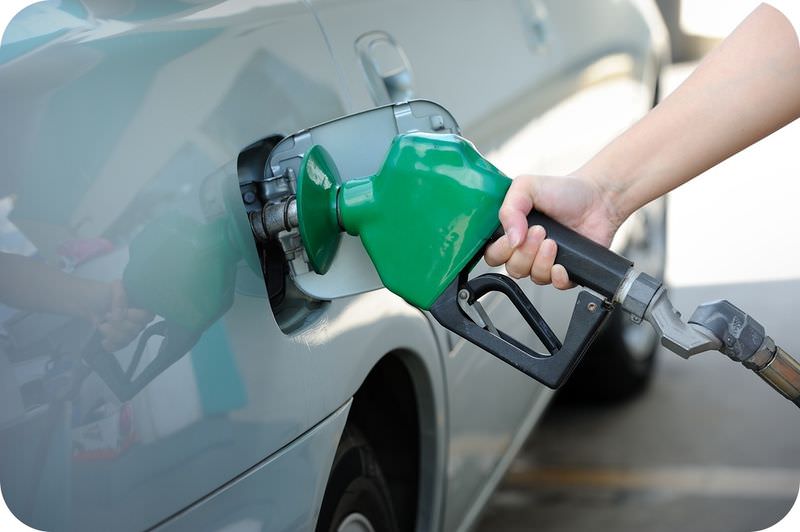12.30: Nonrenewable Resources
- Page ID
- 14478

Could we all run out of gasoline?
Yes, we will use up all our gasoline eventually. Gasoline is derived from oil. Oil deposits were formed over hundreds of millions of years. They cannot be quickly replenished. Oil is an example of a nonrenewable resource.
Nonrenewable Resources
A nonrenewable resource is a natural resource that is consumed or used up faster than it can be made by nature. Two main types of nonrenewable resources are fossil fuels and nuclear power. Fossil fuels, such as petroleum, coal, and natural gas, formed from plant and animal remains over periods from 50 to 350 million years ago. They took millions of years to form. Humans have been consuming fossil fuels for less than 200 years, yet remaining reserves of oil can supply our needs only until around the year 2055. Natural gas can only supply us until around 2085. Coal will last longer, until around the year 2250. That is why it is so important to develop alternate forms of energy, especially for our cars. Today, electric cars are becoming more and more common. Considering the year 2055 is not that far away, what would happen if we ran out of gasoline? Alternative use of energy, especially in transportation, must become a standard feature of all cars and trucks and planes by the middle of the century.
Nuclear power is the use of nuclear energy (nuclear fission) to create energy inside of a nuclear reactor (Figure below). Nuclear power is developed from atoms in certain elements, such as uranium. Currently, there are limited uranium fuel supplies, which will last to about the year 2100 (or longer) at current rates of use. However, new technologies could make some uranium fuel reserves more useful.

Population growth, especially in developing countries, should make people think about how fast they are consuming resources. Governments around the world should seriously consider these issues. Developing nations will also increase demands on natural resources as they build more factories (Figure below). Improvements in technology, conservation of resources, and controls in population growth could all help to decrease the demand on natural resources.

Summary
- Nonrenewable resources are being used up faster than they can be made by nature.
- Nonrenewable resources include fossil fuels and nuclear power.
Explore More
Use the resource below to answer the questions that follow.
- Formation of Fossil Fuels at http://www.youtube.com/watch?v=_8VqWKZIPrM (2:26)
- How does the formation of coal differ from the formation of oil? How are these processes the same?
- Why are researchers looking for ways to speed up the production of fuel from plant matter?
- Where does natural gas come from?
- When you burn fossil fuels, they release CO2 into the atmosphere. Based on how long it takes fossil fuels to form, when was the last time that the carbon molecule in the CO2 was in the atmosphere? How does this situation differ from someone cutting down a ten-year-old tree and burning it in his/her fireplace? What are the consequences for the atmosphere.
Review
- What is a nonrenewable resource? What are two main types?
- When did fossil fuels form?
- Why is nuclear power considered a nonrenewable resource?

